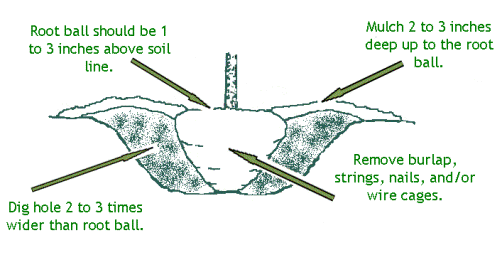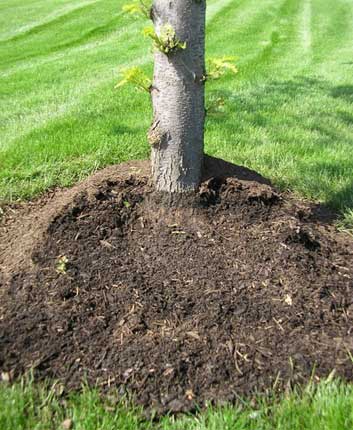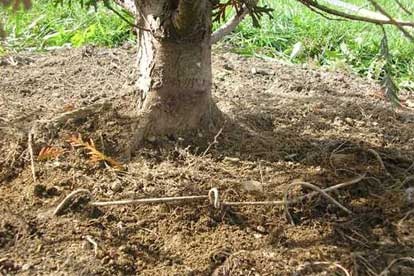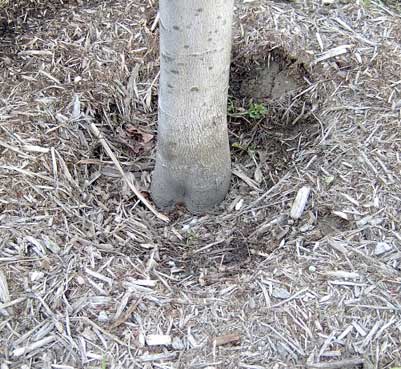PLANTING GUIDE
Before digging it is important to have your public utilities marked. While water and sewer lines are typically below digging depths, gas lines are only about 18 inches below grade. A busted gas line is not only expensive to repair but also dangerous. State law requires that you call the Ohio Utilies Protection Service (OUPS) at 1-800-362-2764. Call at least 48 hours before digging.

When placing the tree or shrub in the hole, verify that the root flare (collar) is slightly above the natural grade. The plant can then be carefully rotated to give the best appearance from various views.
What Not To Do

Below are three examples of what not to do. Each planting practice puts the health of the plant at risk.

 Around this thornless honey locust tree is an example of a mulch volcano. Some of the mulch has been removed from the front of the mound to show how deep the mulch actually is. Mulch should never be applied in this manner. This practice cuts off oxygen to the roots, can rot the trunk, cause root rot in poorly drained soils, and keep the needed rain water out.
Around this thornless honey locust tree is an example of a mulch volcano. Some of the mulch has been removed from the front of the mound to show how deep the mulch actually is. Mulch should never be applied in this manner. This practice cuts off oxygen to the roots, can rot the trunk, cause root rot in poorly drained soils, and keep the needed rain water out.

 In this picture the metal cage was left on the arborvitae. At the minimum, the top eight inches of this cage should have been removed before backfilling the hole. Leaving the cage in the hole will damage lawn equipment, interfere with root growth, girdle roots, and retard growth. This root ball now needs to be dug out, the cage removed, and replanted. Remember to remove all rope and twine. They can girdle trunks and roots as well.
In this picture the metal cage was left on the arborvitae. At the minimum, the top eight inches of this cage should have been removed before backfilling the hole. Leaving the cage in the hole will damage lawn equipment, interfere with root growth, girdle roots, and retard growth. This root ball now needs to be dug out, the cage removed, and replanted. Remember to remove all rope and twine. They can girdle trunks and roots as well.

 While the thickness of the mulch applied is okay in this last example, the red maple was planted too deep. The root flare (collar) is planted several inches below grade.
While the thickness of the mulch applied is okay in this last example, the red maple was planted too deep. The root flare (collar) is planted several inches below grade.
